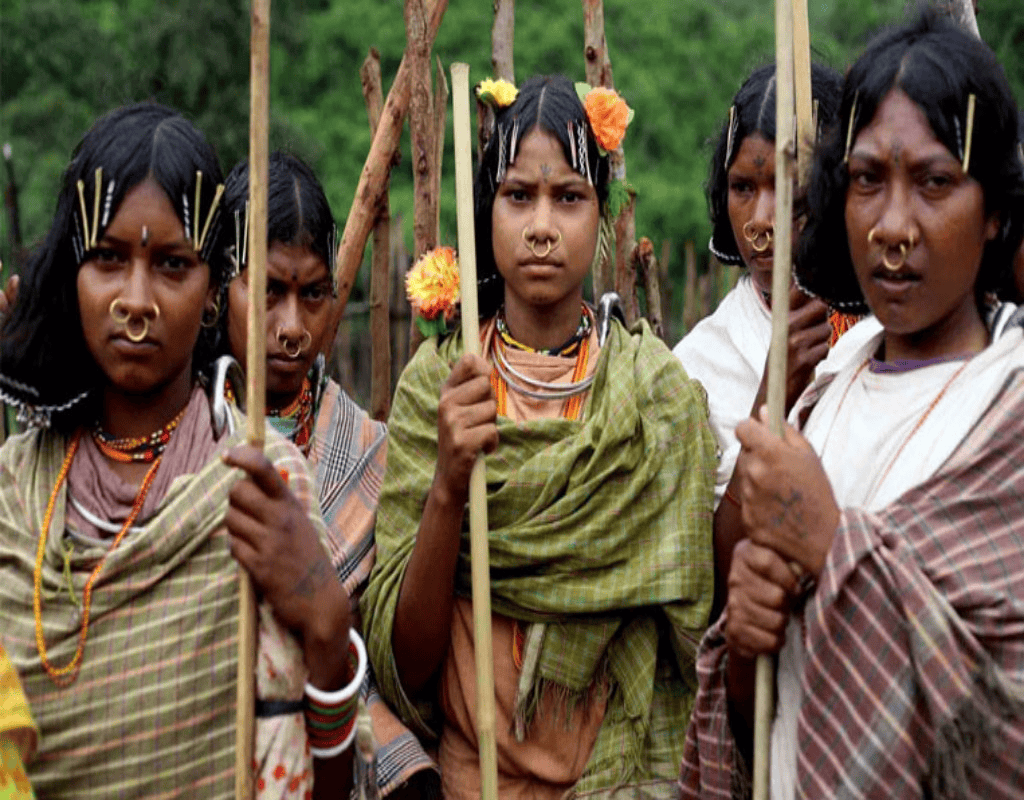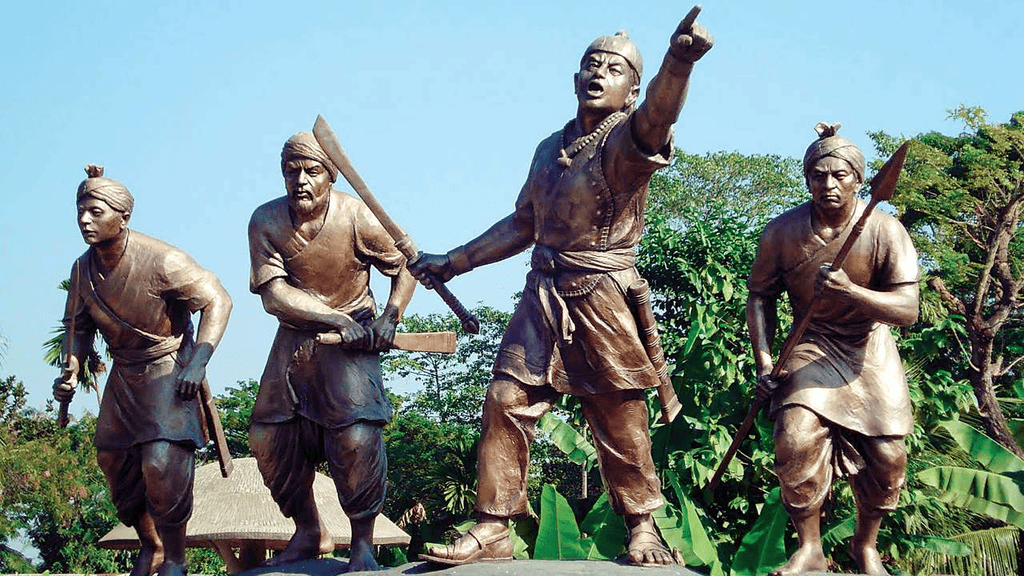Class 7 Exam > Class 7 Notes > Social Studies (SST) Class 7 (Old NCERT) > NCERT Summary: Tribes, Nomads & Settled Communities
Tribes, Nomads & Settled Communities Summary Class 7 History
Introduction
- In large parts of the subcontinent, society was already divided according to the rules of varna.
- These rules, as prescribed by the Brahmanas, were accepted by the rulers of large kingdoms.
Beyond Big Cities: Tribal Societies
- Tribes who lived beyond the cities did not follow the social rules and rituals prescribed by the Brahmanas.
- Many large tribes thrived in different parts of the subcontinent. They usually lived in forests, hills, deserts, and places that were difficult to reach.
- The caste-based and tribal societies also depended on each other for their diverse needs.

Who were Tribal People?
Tribal people were found in almost every region of the subcontinent.
- In Punjab: The Khokhar tribe was very influential during the thirteenth and fourteenth centuries. Later, the Gakkhars became more important.
- In Multan and Sind: The Langahs and Arghuns dominated extensive regions.
- In the North-West: The Balochis
- In the western Himalaya: The Gaddis.
- In north-eastern part of the subcontinent: The Nagas, Ahoms and many others.
- In many areas of present-day Bihar and Jharkhand: Chero chiefdoms had emerged by the twelfth century. The Mundas and Santals were other important tribes that lived in this region and also in Orissa and Bengal.
- In Maharashtra highlands, Karnataka and southern regions: Kolis, Berads, Koragas, Vetars, Maravars and others.
- In Western and central India: The large tribe of Bhils.
- In present-day states of Chhattisgarh, Madhya Pradesh, Maharashtra and Andhra Pradesh: The Gonds
Question for NCERT Summary: Tribes, Nomads & Settled CommunitiesTry yourself:Which tribe was dominant in the Maharashtra highlands, Karnataka, and southern regions?
View Solution
How Nomads and Mobile People Lived
- Nomadic pastoralists moved over long distances with their animals.
- They lived on milk and other pastoral products.
- They also exchanged wool, ghee, etc., with settled agriculturists for grain, cloth, utensils and other products.
- The Banjaras were the most important trader nomads.
- Many pastoral tribes reared and sold animals, such as cattle and horses, to the prosperous people.

Changing Society: New Castes and Hierarchies
Many tribes and social groups were taken into caste-based society and given the status of jatis.
- Specialised artisans smiths, carpenters and masons were also recognised as separate jatis by the Brahmanas.
- Among the Kshatriyas, new Rajput clans became powerful by the eleventh and twelfth centuries.
- With the support of the Brahmanas, many tribes became part of the caste system.
A Closer Look
Gonds
- The Gonds lived in a vast forested region called Gondwana.
- They practised shifting cultivation.
- The large Gond tribe was divided into many smaller clans and each clan had its own raja (king).
- The administrative system of these kingdoms was becoming centralised.
- The emergence of large states changed the nature of Gond society as equal society gradually got divided into unequal social classes.
- Garha Katanga was a rich state of Gond. When the Mughals defeated the Gonds, they annexed part of the kingdom and granted the rest to Chandra Shah.
- After this, Gond became much weaker and later struggled unsuccessfully against the stronger Bundelas and Marathas.

The Ahoms
- The Ahoms migrated to the Brahmaputra valley from present-day Myanmar in the thirteenth century.
- During the sixteenth century, they annexed the kingdoms of the Chhutiyas (1523) and of Koch-Hajo (1581) and subjugated many other tribes.
- The Ahoms built a large state using firearms as early as 1530s.
- By 1660s, they could make high-quality gunpowder and cannons.
- In 1662, they were defeated by the Mughals but Mughal control could not last long.
- The Ahom state depended upon forced labour.
- By the first half of the seventeenth century the administration became quite centralised.
- Ahom society was divided into clans or khels.
- The Ahoms worshipped their own tribal gods.
- During 1714-1744, Hinduism became the predominant religion
Question for NCERT Summary: Tribes, Nomads & Settled CommunitiesTry yourself: What was the main source of livelihood for the nomadic pastoralists mentioned in the text?View Solution
The document Tribes, Nomads & Settled Communities Summary Class 7 History is a part of the Class 7 Course Social Studies (SST) Class 7 (Old NCERT).
All you need of Class 7 at this link: Class 7
|
63 videos|371 docs|46 tests
|
FAQs on Tribes, Nomads & Settled Communities Summary Class 7 History
| 1. क्या जनजातियाँ और खानाबदोश समुदाय एक ही हैं? |  |
Ans. जनजातियाँ और खानाबदोश समुदाय अलग-अलग हैं। जनजातियाँ सामान्यतः स्थायी या अर्ध-स्थायी होती हैं और अपने विशेष क्षेत्र में निवास करती हैं, जबकि खानाबदोश समुदाय अपने संसाधनों की खोज में एक स्थान से दूसरे स्थान पर चलते हैं। दोनों के जीवनशैली में बदलाव और उनके समाज की संरचना में भिन्नताएँ होती हैं।
| 2. जनजातियों का जीवन कैसे होता है? |  |
Ans. जनजातियों का जीवन मुख्यतः प्रकृति पर निर्भर होता है। वे अक्सर खेती, शिकार और संग्रहण के माध्यम से अपने जीवन यापन करते हैं। उनके पास अपनी विशेष संस्कृति, परंपराएँ और भाषा होती हैं, जो उन्हें एक दूसरे से अलग बनाती हैं।
| 3. खानाबदोश समुदायों की विशेषताएँ क्या हैं? |  |
Ans. खानाबदोश समुदायों की विशेषताएँ हैं: वे अपने जीवन में स्थिरता नहीं रखते हैं, बल्कि वे अपने भोजन और पानी की तलाश में यात्रा करते हैं। उनकी जीवनशैली में पशुपालन, शिकार, और प्राकृतिक संसाधनों का संग्रहण शामिल होता है।
| 4. स्थायी समुदायों और खानाबदोशों में क्या अंतर है? |  |
Ans. स्थायी समुदाय स्थायी निवास स्थान पर रहते हैं और खेती, व्यवसाय या उद्योग में संलग्न रहते हैं, जबकि खानाबदोश समुदाय अपने खाद्य स्रोतों की तलाश में यात्रा करते हैं। स्थायी समुदायों के पास एक निश्चित जीवनशैली और सांस्कृतिक पहचान होती है, जबकि खानाबदोशों का जीवन अधिक गतिशील होता है।
| 5. जनजातियों और स्थायी समुदायों के बीच संबंध कैसे होते हैं? |  |
Ans. जनजातियाँ और स्थायी समुदाय अक्सर एक-दूसरे के संपर्क में आते हैं। कभी-कभी जनजातियाँ स्थायी समुदायों के साथ व्यापार करती हैं या उनके साथ सामाजिक संबंध बनाती हैं। हालाँकि, उनके बीच संघर्ष भी हो सकता है, खासकर जब संसाधनों पर प्रतिस्पर्धा होती है।
Related Searches

















